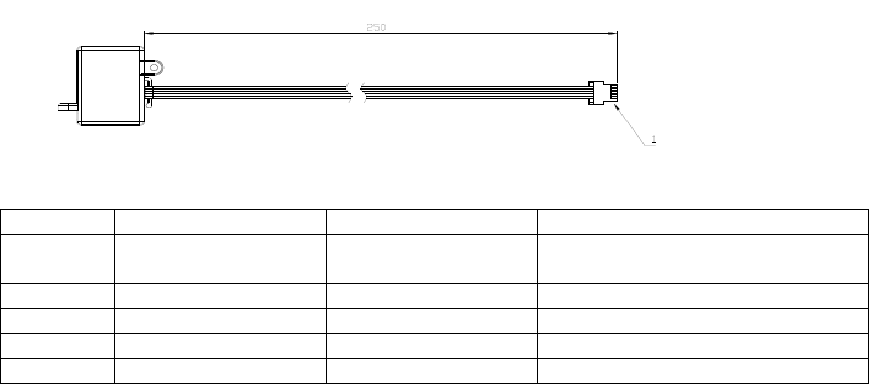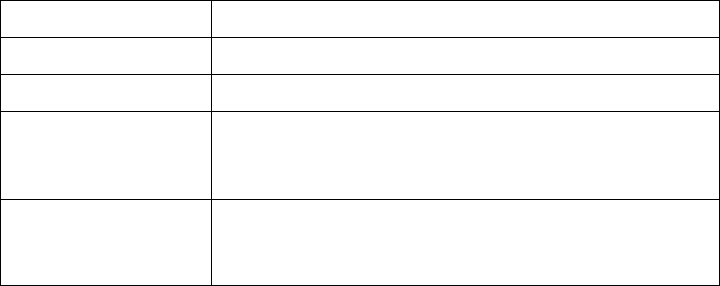Kohler KOHLER021 UART CLOUD MODULE User Manual usermanual rev4
Kohler Co. UART CLOUD MODULE usermanual rev4
Kohler >
Users Manual

UART Cloud Communication Assembly(for Certificate)
1 Scope
The assembly is designed to the application scenarios of KohlerKonnect, it works as a bridge unit between
Kohler intelligent devices and upper network devices, such as intelligent gateway or router
2 Related Standards
2.1 Wi-Fi: in compliance with 802.11b/g/n,WEB,WPA/WPA2,PSK/EnterPrise
2.2 Bluetooth: in compliance with BQB certificate
2.3 RF: in compliance with EN300328-1 and EN300328-2)
2.4 EMC: in compliance with EN301489-1 and EN301489-17)
2.5 CE/CB/FCC certificated
2.6 In compliance with RoHS directives
3 Specification
3.1 Operation Conditions
3.1.1 Operation temperature: -10℃~55℃
3.1.2 Operation humidity: below RH98%
3.1.3 Storage temperature: -40℃~71℃
3.2 Supply Voltage: DC4.5V – DC 7V
4 Outline structure and Electrical Interface
4.1 Structural drawing
4.2 Pin-out of connect: 5, UART supported,
Pin No.
HW Label
I/O
Description
1
CONNECT(3.3V)
Out
L
—
Connection
H--- Disconnection
2
CC
M_RXD(3.3V)
In
UART RX
3
CC
M_TXD(3.3V)
Out
UART TX
4
5V
In
POWER
5
GND
In
GND
5 Features of Assembly
5.1 General Features
5.1.1 OS of mobile devices

Above Android 4.4.2 or iOS 8.0
5.2.2 Quick wireless connection and communication mode selection
Received the command of network paring
Wi-Fi module and BLE module start paring operation concurrently
Wi-Fi module stays in paring operation for 30sec, it quits the process automatically if timer is
out
BLE module stays in paring operation for additional 90sec, it quits the process automatically
if timer is out
(Whichever any communication mode is established, the assembly will record the mode flag
(Wi-Fi or BLE) and quit the paring process
Power off the unselected module to reduce the power consumption
5.2 Features of Bluetooth Module
5.2.1 Support firmware upgrade by OTA
5.2.2 Wireless connection and binding
Binding Principles
Max binding devices: 7pcs
The 1st device will be kicked out if the 8th device joined
5.2.3 RF specification
in compliance with BLE protocol
5.3 Features of Wi-Fi module
5.3.1 Support Station and Soft AP mode
5.3.2 Support multiple cloud services access, such as Azure and AWS
5.3.3 Support firmware upgrade by OTA
5.3.4 Quick wireless conection
User registration, log-in, acquiring device list, binding and unbundling
Implement the quick wireless connection with SSID and passcode
5.3.5 RF specification
Parameter
Description
frequency
2.4
00
~ 2.4
83.5
Ghz
Standard
802.11b/g/n
odulation
11b: DBPSK, DQPSK,CCK for DSSS
11g: BPSK, QPSK, 16QAM, 64QAM for OFDM
11n: MCS0~7,OFDM*
Data rate
11b:1, 2, 5.5 and 11Mbps
11g:6, 9, 12, 18, 24, 36, 48 and 54 Mbps
11n: MCS0~7, up to 72Mbps

Antenna
PCB Antenna (Default)
6. Hardware Specification
6.1 Bluetooth module
An ultra-low power 2.4G wireless system on chip, integrated an ARM® Cortex™ M0 32bit processor
@ 16MHz and BLE stack/profile
256K Flash memory, 16K RAM
Support PCB antenna or external antenna (alternatively)
6.2 Wi-Fi Module
Comprised an ARM® Cortex™ M4 32bit processor @ 100MHz and a IEEE 802.11 b/g/n compliant RF
chip
512K on-chip flash, 2M external flash, and 128K RAM
Support PCB antenna and IPEX external antenna (alternatively)
7. Statement
7.1 FCC Statements:
This device complies with Part 15 of the FCC Rules. Operation is subject to the following two conditions:
(1) This device may not cause harmful interference, and
(2) This device must accept any interference received, including interference that may cause undesired
operation.
Note: This product has been tested and found to comply with the limits for a Class B digital device,
pursuant to Part 15 of the FCC Rules. These limits are designed to provide reasonable protection against
harmful interference in a residential installation. This product generates, uses, and can radiate radio
frequency energy and, if not installed and used in accordance with the instructions, may cause harmful
interference to radio communications. However, there is no guarantee that interference will not occur in a
particular installation. If this product does cause harmful interference to radio or television reception,
which can be determined by turning the equipment off and on, the user is encouraged to try to correct the
interference by one or more of the following measures:
—Reorient or relocate the receiving antenna.
—Increase the separation between the equipment and receiver.
—Connect the equipment into an outlet on a circuit different from that to which the receiver is connected.
—Consult the dealer or an experienced radio/TV technician for help.
Please take attention that changes or modification not expressly approved by the party responsible for
compliance could void the user’s authority to operate the equipment.
7.2 IC Statements
This device complies with Industry Canada licence-exempt RSS standard(s). Operation is subject to the
following two conditions:
(1) this device may not cause interference, and
(2) this device must accept any interference, including interference that may cause undesired operation of
the device.
Le présent appareil est conforme aux CNR d'Industrie Canada applicables aux appareils radioexempts de
licence. L'exploitation est autorisée aux deux conditions suivantes :
(1) l'appareil ne doit pas produire de brouillage, et
(2) l'utilisateur de l'appareil doit accepter tout brouillage radioélectrique subi, même si le brouillage est
susceptible d'en compromettre le fonctionnement.
This equipment should be installed and operated with a minimum distance 20cm between the radiator
and your body
Cet équipement doit être installé et utilisé à une distance minimale de 20 cm entre le radiateur et votre
corps
8. Device Installation and User Manual
The IoT module is a proprietary product designed and manufactured by Shanghai Kohler Electronics. , Ltd. for
integration into telematics control units manufactured by Shanghai Kohler Electronics. , Ltd. for closestool
OEMs.
i. The module is limited to installation ONLY in an integrated device manufactured by Shanghai Kohler
Electronics. , Ltd.
ii. During manufacturing process of the integrated device, the module is soldered onto the pcb of the
integrated device.
iii. The antenna is integral PCB trace Antenna and maximum gain is 2 dBi for WiFi and 0dBi for BT.
This module has been approved by FCC to operate with the antenna types with the maximum permissible gain
indicated. Antenna types not included in this list, having a gain greater than the maximum gain indicated for
that type, are strictly prohibited for use with this device.
iv. Automotive OEM is responsible for ensuring that the end-user has no manual instructions to remove or
install module.
v. The module is limited to installation in mobile applications, according to Part 2.1091(b).
vi. No other operation configurations are allowed.
vii. Changes or modifications to this system by other than a facility authorized by Continental could void
authorization to use this equipment.
viii. The module must be installed to provide a separation distance of at least 20 cm from all persons and
must not be co-located or operate in conjunction with any other antenna or transmitter.
ix. The integrator is responsible for fulfilling FCC and RSS requirements for the integrated device.
If Continental chooses to re-use modular approval, then the TCU shall be clearly labeled with
an external label containing the integrated modem’s FCC ID or IC. For example, the label can
include text “Contains device with FCC ID: N82-KOHLER021 or IC:4554A-KOHLER021.